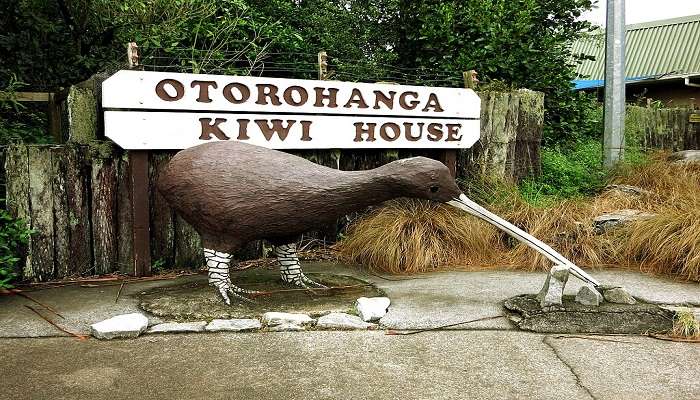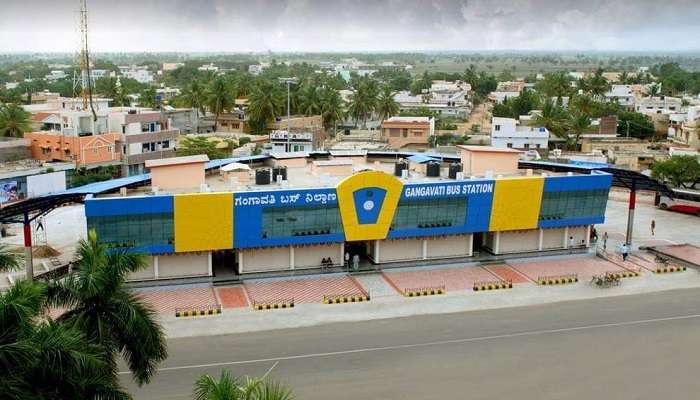Visit Kibera In Nairobi For An Experience To Remember In 2025
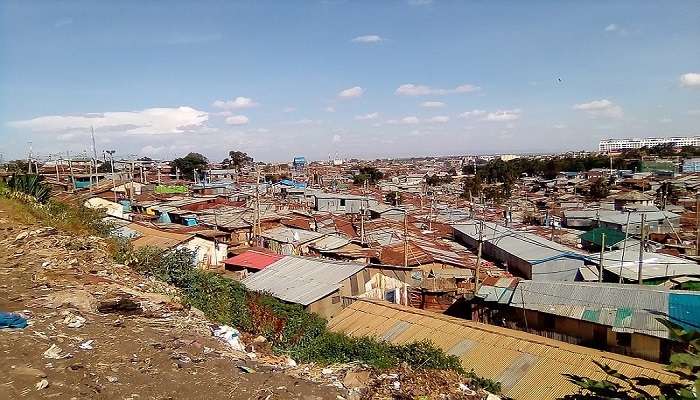
Kibera is a division and neighbourhood of Nairobi, Kenya, 6.6 kilometres from the city centre.
Kibera is the largest slum in Nairobi and the most significant urban slum in Africa. The 2009 Kenya Population and Housing Census reports Kibera’s population as 170,070, contrary to previous estimates of one or two million people. Kibera is in southwest Nairobi, 6.6 kilometres from the city centre. Much of its southern border is bounded by the Nairobi River and the Nairobi Dam, an artificial lake that used to provide drinking water to the city’s residents. We’ve curated a list of all you need to know about Kibera when you decide to visit Kenya.
History Of Kibera

Kibera, one of Africa’s largest urban slums, is in Nairobi, Kenya. Its history dates back to the early 20th century during British colonial rule. In 1904, the British colonial government allocated land on the outskirts of Nairobi to Nubian soldiers who had served in the King’s African Rifles. Originally from Sudan, these soldiers were permitted to settle in the area as a reward for their service. “Kibera” comes from the Nubian word “kibra,” meaning forest or jungle, reflecting the area’s original landscape. Initially, the settlement was relatively small and well-organized. After Kenya’s independence in 1963, rural-urban migration increased dramatically. Many people moved to Nairobi seeking employment opportunities, and Kibera became a popular destination due to its proximity to industrial areas and low living costs.
Must Read: Restaurants In Kenya
Places To Visit Around Kibera
Africa’s largest slum area has other places to visit. Here is a list of a few places around Kibera that you can explore:
1. Lake Nakuru National Park
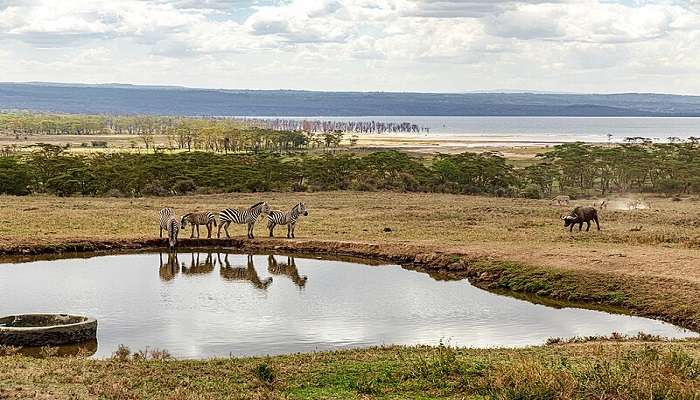
Located northwest of Nairobi, Lake Nakuru National Park is a paradise for nature lovers and wildlife photographers. The park’s centrepiece is a soda lake that often hosts thousands of flamingos, creating a stunning pink spectacle across the water’s surface. Beyond the famous flamingos, the park boasts a diverse array of wildlife. Visitors can spot rhinos, lions, and leopards against a backdrop of acacia forests and rocky escarpments. The changing seasons bring different birds and animals to the forefront, ensuring each visit offers a unique experience.
Timings: 6:00 AM to 6:00 PM.
Entry fees: For non-residents, the fee is $80 for adults and $40 for children, making it a premium but worthwhile destination.
2. Hell’s Gate National Park
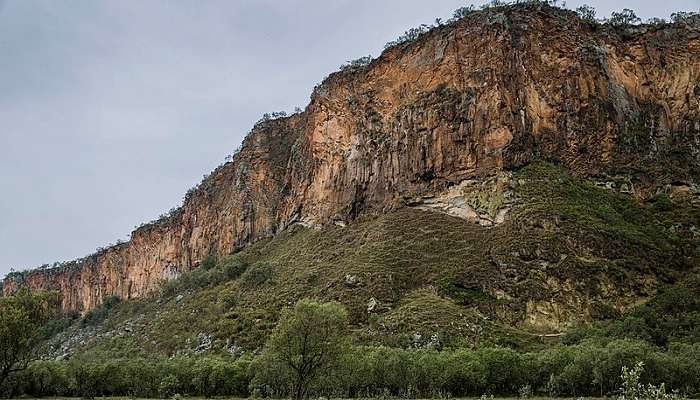
Near Nairobi, Hell’s Gate National Park presents a dramatic landscape of towering cliffs, deep gorges, and striking rock formations. Unlike many wildlife parks, Hell’s Gate allows visitors to explore on foot or by bicycle, creating an intimate connection with nature. The park’s geothermal features, including steam vents and hot springs, hint at the powerful forces that shaped this land. Adventure seekers can enjoy rock climbing on the park’s cliff faces, while those seeking relaxation can soak in the therapeutic waters of Olkaria Geothermal Spa.
Timing: 6:00 AM to 6:00 PM.
Entry fees: For non-residents, are $30 for adults and $20 for children
Suggested Read: Nyali Beach
3. Mount Longonot National Park
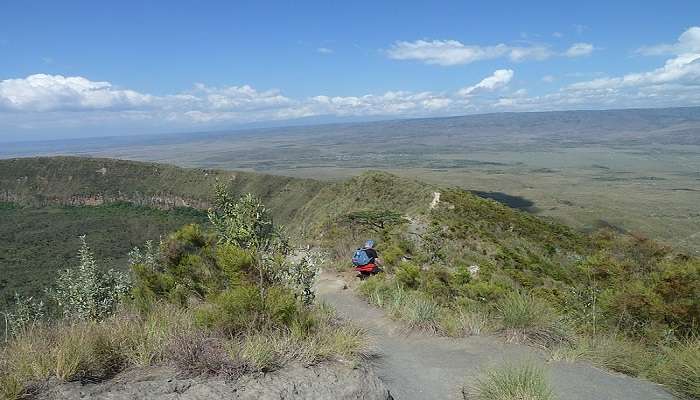
Mount Longonot National Park offers a challenging but rewarding experience for those drawn to volcanic landscapes. The dormant volcano’s steep slopes lead to a rim trail circling a vast crater, providing hikers with panoramic views of the Great Rift Valley. The ascent through changing vegetation zones reveals the mountain’s diverse ecosystem, from dry savanna at the base to lush forests near the summit. While wildlife sightings are less common than in other parks, the occasional glimpse of animals adds an element of excitement to the climb.
Timings: 6:00 AM to 6:00 PM daily
Entry fees: For non-residents, are $20 for adults and $15 for children
4. Ngare Ndare Forest
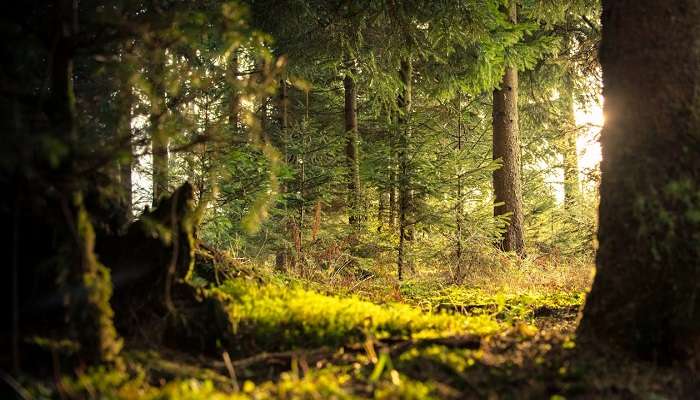
Ngare Ndare Forest offers a lush, green retreat for a different kind of natural beauty. This indigenous forest showcases the diversity of Kenya’s landscapes, with its canopy walk providing a bird’s-eye view of the verdant surroundings. Crystal-clear blue pools fed by mountain springs invite visitors for a refreshing swim while hiking trails lead to hidden waterfalls. The forest’s tranquil atmosphere contrasts sharply with the open savannas of other parks, demonstrating the range of ecosystems found in this part of Kenya.
Timings: 8:00 AM to 5:00 PM daily.
Entry fees: For non-residents, are $20 for adults and $10 for children
How To Reach Kibera
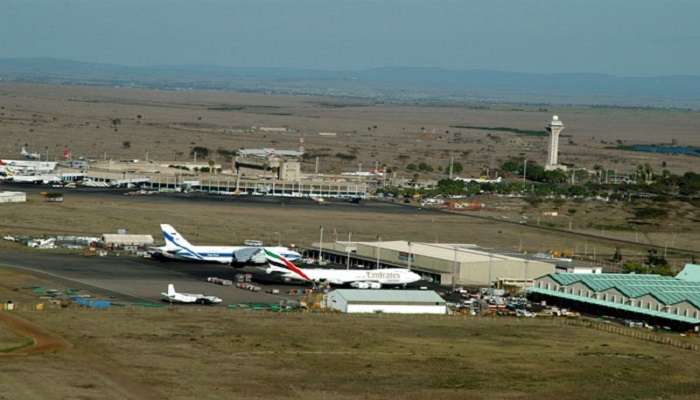
Kibera is situated in Nairobi. Which means it enjoys excellent connectivity. Here are some ways on how you can reach Nairobi
By Air:
Jomo Kenyatta International Airport (JKIA) is Nairobi’s main gateway. British Airways, KLM, Emirates, and Kenya Airways offer direct flights from major cities worldwide. Taxis and ride-hailing services are available for transport to the city centre, 15 km away.
By Road:
It is accessible from neighbouring countries, though journeys can be long. From Uganda, use the Malaba or Busia border crossing, then the A104 highway (12-14 hours from Kampala). From Tanzania, enter via the Namanga border and take the A104 north (4-5 hours from Arusha). Long-distance buses operate from various East African cities.
By Rail:
The Standard Gauge Railway (SGR) connects Nairobi to Mombasa, with daily departures in both directions (5-hour journey). Take the train from Kampala to Kisumu from Uganda, then complete the journey by bus or private transport.
Further Read: Hotels In Kenya
Now that you have a list of things to remember for your next vacation, such as seeing the beautiful Kibera, plan your trip to Kenya to these fabulous spots for the experience of a lifetime. Don’t miss out on these opportunities, and book your tickets now!
For our editorial codes of conduct and copyright disclaimer, please click here.
Cover Image Credit: Kipala for Wikimedia Commons
Frequently Asked Questions About Kibera
Can we visit Kibera?
While Kibera has a reputation for poverty and crime, many visitors find it safe when accompanied by a reputable local guide. Stick to daytime visits, respect residents' privacy, and follow your guide's instructions. Avoid displaying valuable items or large amounts of cash.
How can I visit Kibera responsibly?
Choose ethical tour operators that work with community organizations and ensure a portion of profits benefit local initiatives. Respect residents' privacy by asking permission before taking photos. Consider supporting local businesses or community projects during your visit.
What should I wear when visiting Kibera?
Dress modestly and comfortably. Avoid flashy jewellery or expensive-looking clothing. Wear closed-toe shoes suitable for uneven terrain. Consider bringing a hat and sunscreen for sun protection.
Are there any cultural considerations I should be aware of?
Be respectful of local customs and religious practices. Ask permission before entering homes or taking photos of individuals. Learn a few basic Swahili greetings to show respect and build rapport with residents.
Can I bring donations when visiting Kibera?
While the intention is good, bringing random donations can create dependency and disrupt local markets. Instead, consider supporting established local organizations or purchasing goods from community businesses during your visit.
People Also Read:
Kenya In August Best Things To Do In Africa Nairobi In Kenya

We all have to begin somewhere. This is where I start and I hope that my writings encourage you to begin. To new beginnings and conquering new places!



